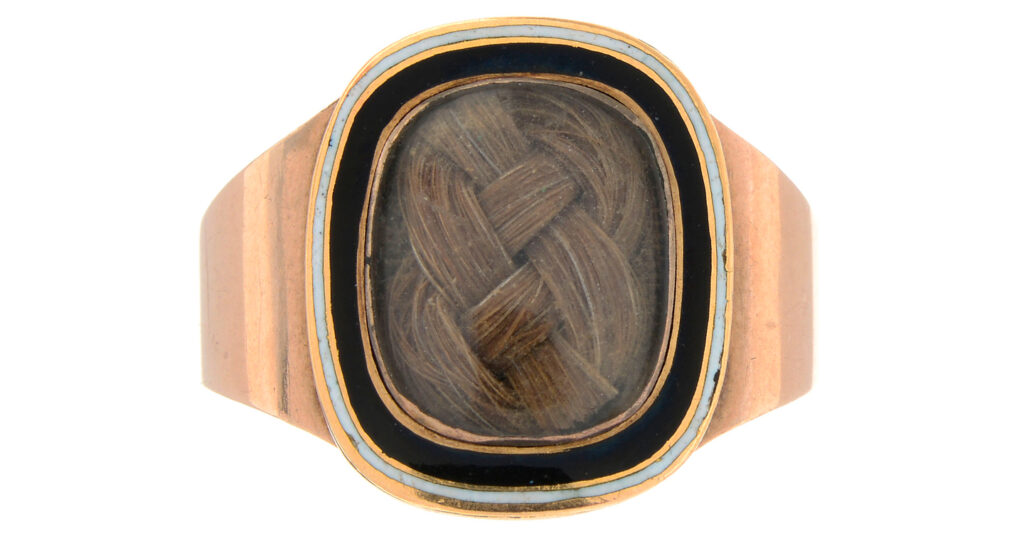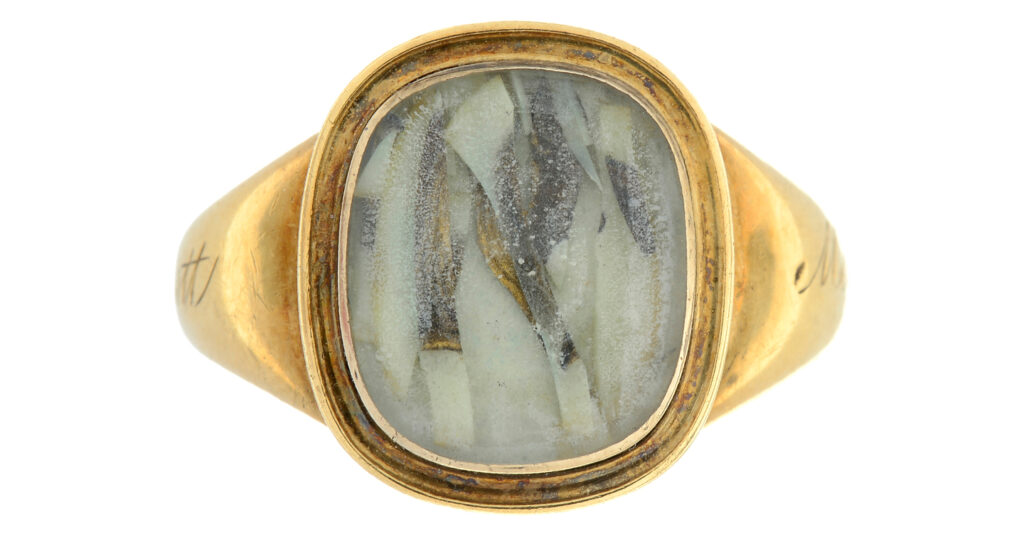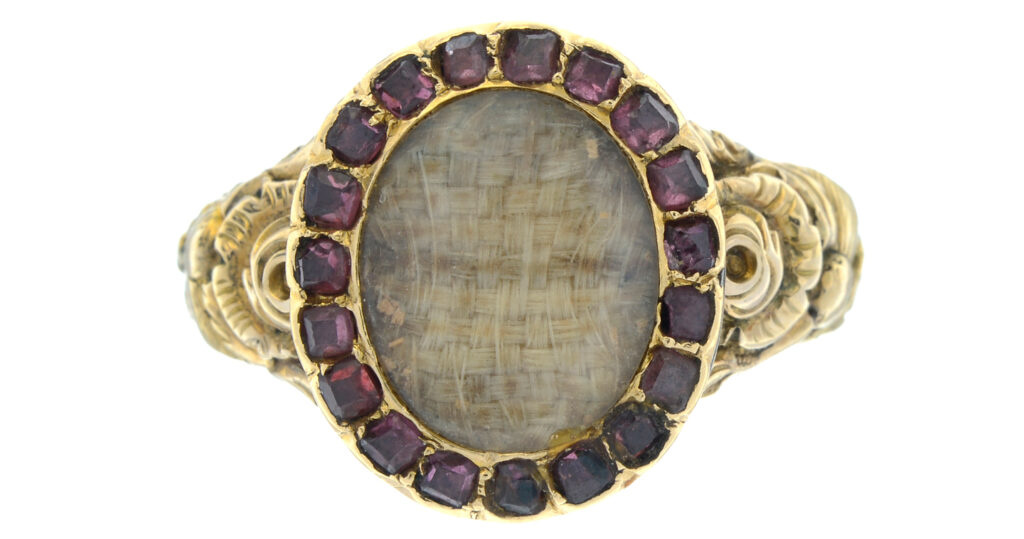Moss Agate Mourning Ring
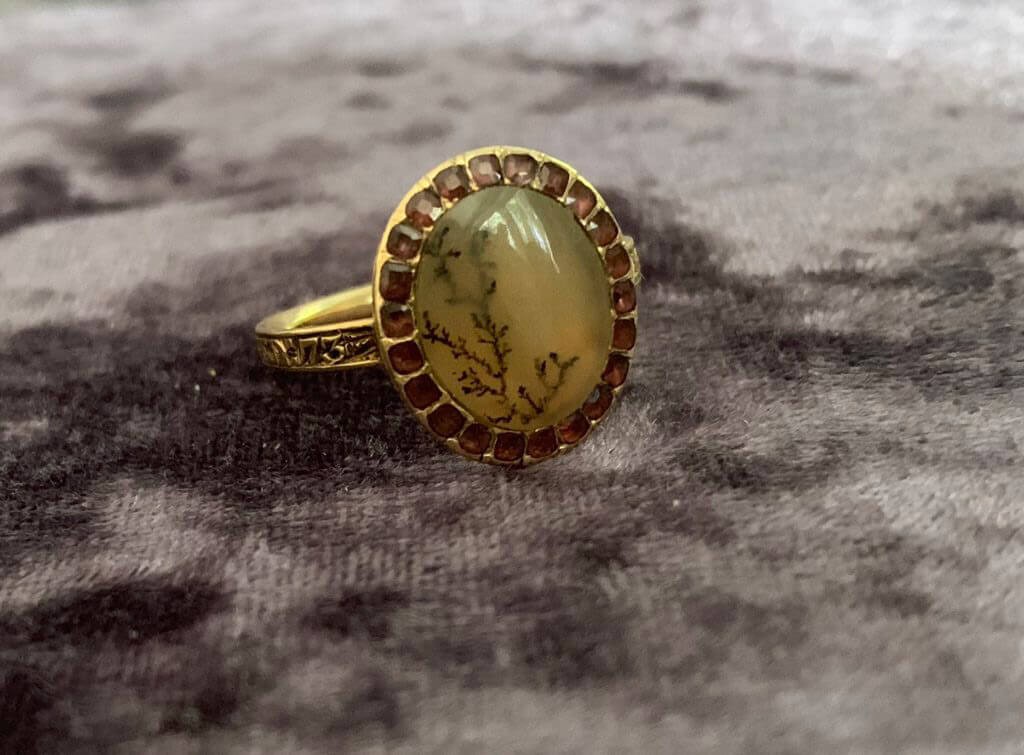
Styles of jewellery adapted over time, as access to materials through trade and foreign influences through fashion led to design changes. A gem or material that was used at a time gained a significant symbolic meaning, if it was widely used and considered popular. As with all materials, the quality and desirability was amplified with popularity and the moss agate seen in this ring reflects its time and popularity.
Moss agate, or dendritic agate, was widely used in the 18th and 19th centuries in jewels. As with many mourning jewels, the mourning usage adapted to what was popular during the time. Agate was widely used across all jewels and mined extensively throughout the world. Moss agate during this time was predominantly found in the Deccan region of India. It has its unusual style due to the presence of manganese and iron oxides. The fern pattern lends itself to symbolism, in that the right agate can represent the ‘tree of life’.
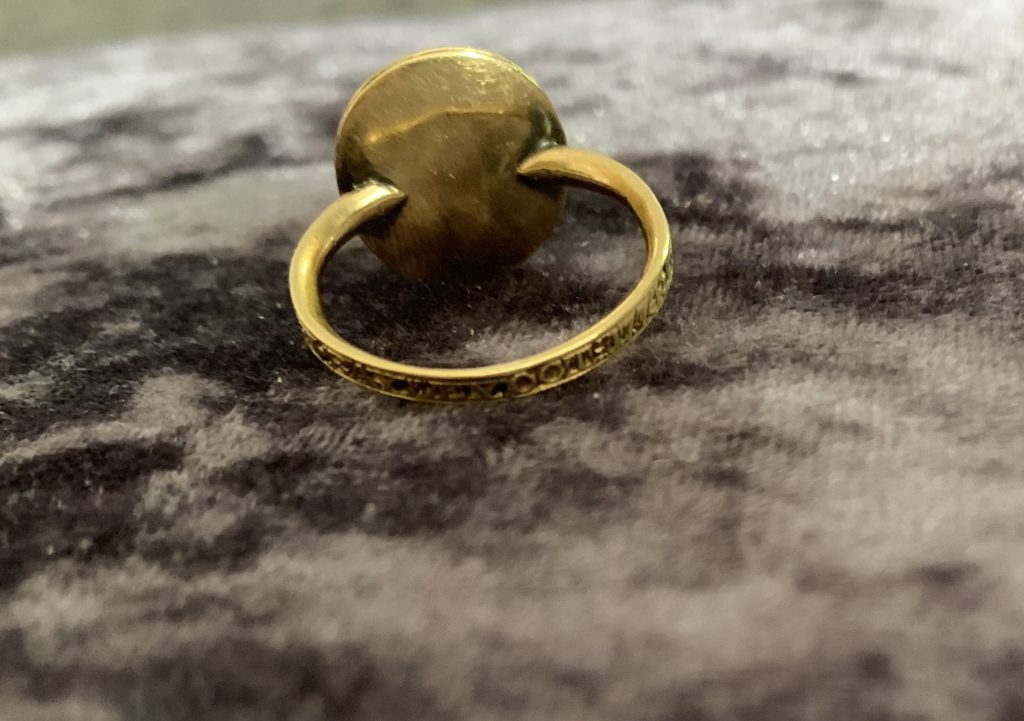
Mourning jewellery adaptation in popular jewellery design was quite acceptable in the 18th century for several reasons. Symbolism in the late 18th century was facilitated by the Neoclassical movement. Large, allegorical depictions of lovers, flora and fauna reflected many of the ancient archaeology that was being excavated in digs from the Mediterranean. Much of this is related to the humanist movement and the Enlightenment, a reflection on society at the time. The human was at the centre of the allegories, such as the female mourner, who was the representation of grief and love itself. Rings, brooches, bracelet clasps had popular designs of the female, wearing Greco-Roman dress next to a tomb or urn, in mourning. This was a representation that put the human before the religious connotation of a soul flying towards the heavens or a depiction of Jesus or a saint. The Protestant Reformation post c.1517 changed the human values in what happens after death and the 18th century shows how society developed this. It was a time of affluence, discovery and challenge and the pre-Christian societies were excellent ways of representing identity in the contemporary modern times.
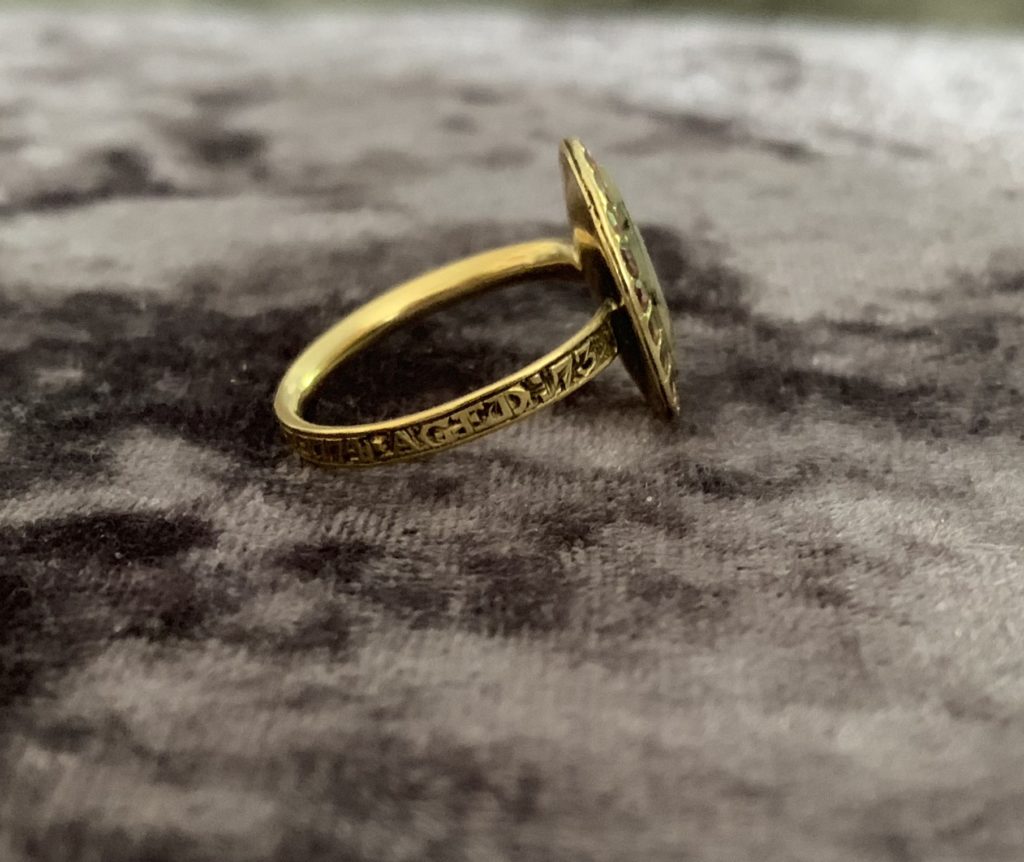
As such, fashion grew through affluence. With new discoveries, symbolism grew and adapted to represent flora and fauna. Religious meaning was not lost, but given new contexts in symbols. Moss agate and the ‘tree of life’ relates to Genesis 2:9 and 3:22-24 as the source of eternal life, which was rescinded when man was removed from the Garden of Eden. Not all moss agates reflect this design, however; it was a popular material used for its aesthetic quality. When found with the relevant design, it does carry more symbolic weight than just being an attractive agate.
Sepia miniatures were also popular in the 18th century, mostly painted on ivory or sometimes vellum. Their monotone colour is related to the body and earth in the brown hues and moss agate is connected to this for the aesthetic quality. These miniatures were fit into rings, brooches and bracelets, making them popular jewels for the time. Agates which could reflect these designs were also popular for similar qualities. They were attractive and this was the demand of the public for jewels that wanted the aesthetic quality.
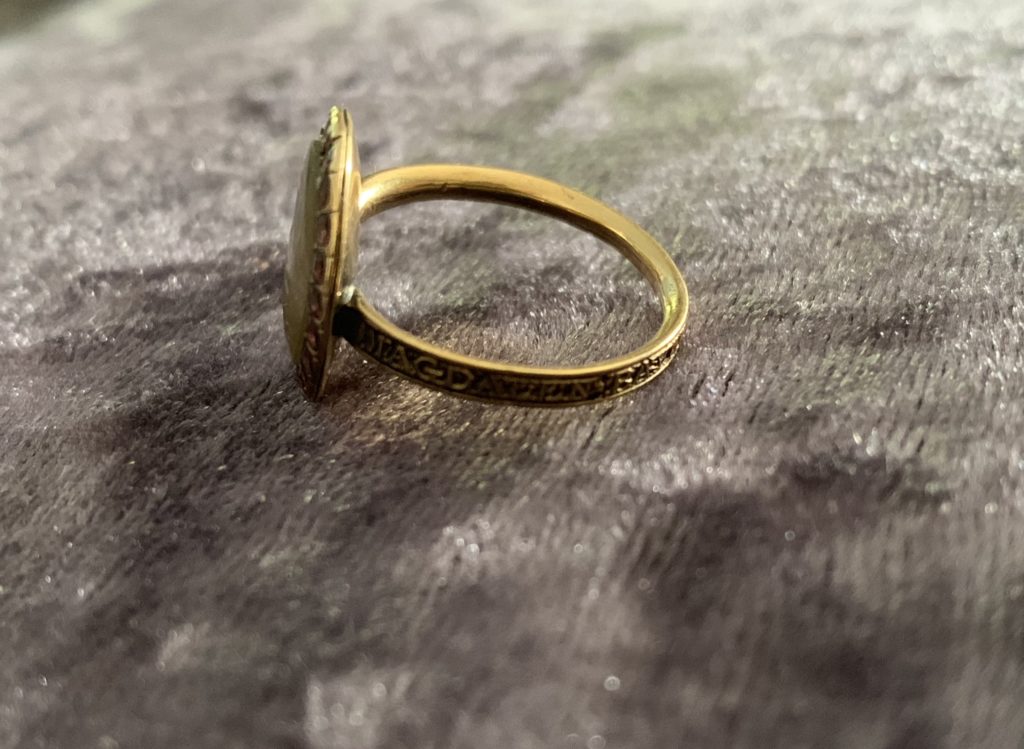
Moss agate remained popular through the 19th century, both within mourning jewels and as a popular agate to wear. If a jewel is worn for a certain purpose and doesn’t denote a clear statement, one must assume it is for the aesthetic quality. When there is a clear statement of death, such as in this ring, there is a connection to symbolism and reason why it was used as a mourning jewel.
Courtesy: Leigh Watson




